Italian is one of the most popular languages to learn worldwide, and it’s no wonder—it sounds absolutely beautiful! Whether you’re just starting out or have been learning for a while, why not give this basic Italian test a try? Can you beat my mom’s score of 25 out of 30? Let’s see how well you do!
Important: The correct answer, along with a simple explanation, is provided below each image. Enjoy!
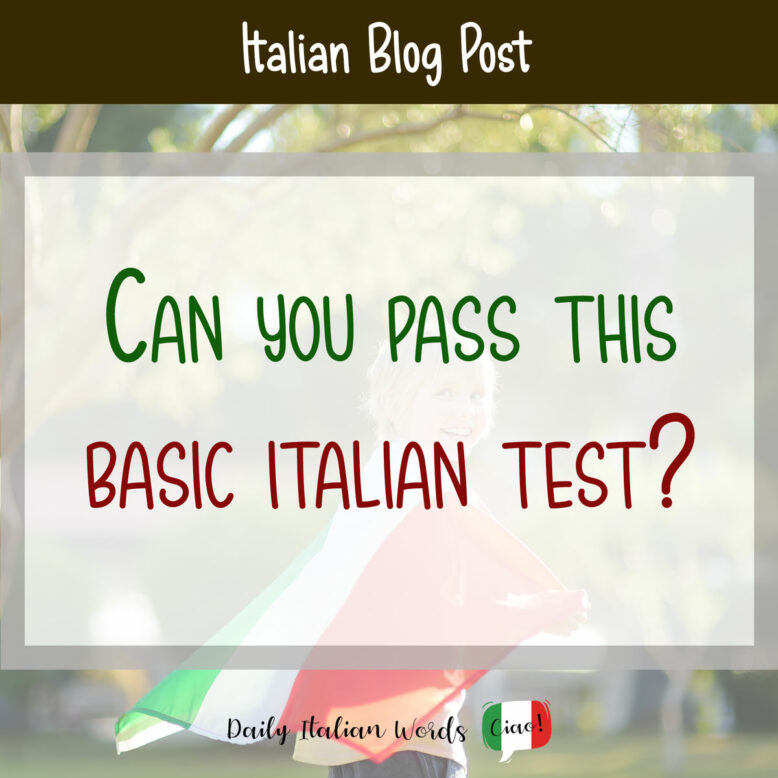
Question 1: How do Italians greet each other in the morning?
Buonasera
BUongiorno
buona giornata
bella giornata

Answer: BUONGIORNO
The correct answer is buongiorno, which translates to good day, good morning or hello. Buona giornata is used when saying goodbye to someone, similar to the phrase have a good day. Buonasera is used in the evening, while bella giornata means beautiful day.
Question 2: How do you say “I love you” in Italian?
Ti amo
mi piaci
ti voglio bene
ti amo & ti voglio bene

Answer: TI AMO / TI VOGLIO BENE
There are actually two ways to say I love you in Italian: ti amo, which is for romantic love between couples, and ti voglio bene, which is for platonic love between friends and family members. Mi piaci, which means I like you, isn’t as strong.
Question 3: What does “caldo” mean in Italian?
cold
caldron
hot
handsome

Answer: HOT
Learners of Italian commonly assume that caldo means cold because of the similarity in spelling, but in actual fact, caldo means just the opposite – hot. The word for cold in Italian is freddo.
Question 4: Choose the correct preposition for the phrase “Vado __ Francia” (I go to France).
alla
a
in
verso
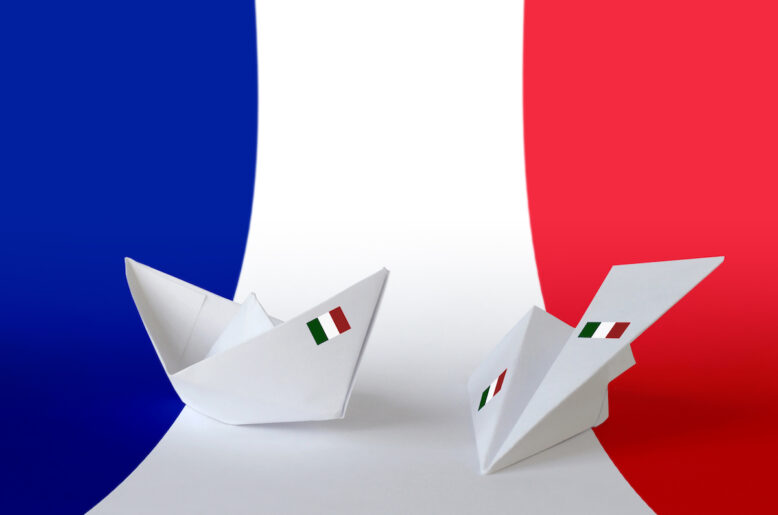
Answer: IN
Prepositions can be tricky for anyone learning Italian. Just remember, when you’re talking about countries, you need to use the preposition in for both being in the country and going to the country. (Vado in Francia / Sono in Francia)
Question 5: How do you say “I’m hungry” in Italian?
Ho fama
sono fame
Ho fame
voglio mangiare

Answer: HO FAME
The correct answer is ho fame. In English, we say I am hungry using the verb to be, but in Italian, you need to use the verb avere (to have). This is because fame is a noun that means hunger, so you’re literally saying I have hunger. Fama is a similar-sounding noun that means fame and voglio mangiare means I want to eat.
Question 6: What does the phrase “I miei parenti lavorano in fattoria” mean?
my parents work on a farm
my relatives work in a factory
my relatives work on a farm
my parents work in a factory

Answer: MY RELATIVES WORK ON A FARM
Here we have a couple of false friends. Parenti in Italian means relatives, not parents, and fattoria means farm, not factory. So the correct answer is number 3!
Question 7: How would you translate “I’ve been studying Italian for 5 months”?
Studio L’italiano per 5 mesi.
sto studiando L’italianO per 5 mesi
ho studiato L’italiano da 5 mesi.
studio L’italiano da 5 mesi.

Answer: STUDIO L’ITALIANO DA 5 MESI
The correct answer is studio l’italiano da 5 mesi. A very common mistake among English speakers is to use per (for) instead of da (from) to express how long you have been doing something. You should also use the present tense studio (I study) because the action is still ongoing in the present.
Question 8: How would you translate “I like ice cream”?
Mi piaccio il gelato.
mi piace il gelato.
io piace il gelato.
io piaccio il gelato.

Answer: MI PIACE IL GELATO
The correct answer is mi piace il gelato (or il gelato mi piace). This is because the Italian verb piacere actually functions in a similar way to the English verb to please – literally “the gelato pleases me.” The ice cream becomes the subject of the sentence, and “I / me” becomes the object.
Question 9: What does “fare senso” mean?
to sense
to gross out / disgust
to make sense
to figure out

Answer: TO GROSS OUT / DISGUST
Many learners assume that fare senso means to make sense because, in many cases, fare translates as to make / to do. But what it actually means is to gross out or to disgust! If you want to say to make sense, you need to use the expression avere senso (literally “to have sense”).
Question 10: Which of these words isn’t a body part?
testa
mano
orecchio
lega

Answer: LEGA
The word lega may look a lot like the English leg, but it actually means league, association or legion. Leg in Italian is gamba.
Question 11: Which of these greetings is formal?
Come stai?
Come sta?
Tutto bene?
come butta?

Answer: COME STA?
Come sta? is the formal equivalent of Come stai? (How are you?) The other two expressions – Come butta? and Tutto bene? – mean What’s up? and Everything ok? respectively.
Question 12: Which day of the week is “martedì”?
Tuesday
Thursday
Monday
sunday
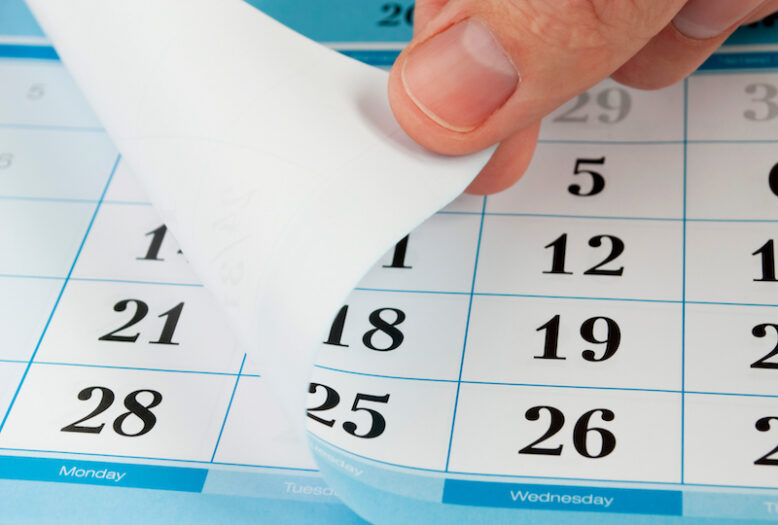
Answer: TUESDAY
It’s true that martedì and Monday both start with the letter M, but martedì means Tuesday. You can discover all the days of the week in Italian here!
Question 13: Which of the following is the colour “verde”?
violet
green
red
yellow

Answer: GREEN
Don’t let the letter V deceive you – verde isn’t violet but green! You can discover all the Italian colours here!
Question 14: Which adjective works best in the following phrase? “Questa canzone è la mia ____.” (This song is my favourite.)
preferita
favorita
adorata
migliore

Answer: PREFERITA
While favorito does mean favourite in certain cases, such as when referring to someone who is advantaged (e.g., the king’s favourite) or someone with good prospects of winning, preferito is used when talking about what you like best. Adorato means adored, and migliore means the best.
Question 15: How do you say “thank you” in Italian?
grato
gracias
grazie
grazi

Answer: GRAZIE
Grazie is always written with an -e on the end, and the -e is clearly pronounced. Gracias is Spanish, so try not to mix up the two languages! Grato is an adjective that means grateful.
Question 16: And how should you respond to “grazie”?
prego
piacere
Ti prego
sei benvenuto

Answer: PREGO
The most common response to grazie is prego, which has six additional meanings, just to make matters more confusing! Piacere means nice to meet you or to please / like while ti prego means I beg you. Sei benvenuto means you are welcome (as in “you are welcome to my house / to join us”), but it isn’t used as a response to grazie.
Question 17: What is the past participle of “scrivere” (to write)?
scritto
scrivato
scrivo
scrivendo

Answer: SCRITTO
My 4 year old son, bless his heart, always says scrivato instead of scritto. Scrivo is the present tense (I write) and scrivendo is the gerund (writing).
Question 18: How do you say “How old are you?” in Italian?
Quanti ani hai?
Quanti anni hai?
Quanti anni sei?
Quanto sei vecchio / vecchia?

Answer: QUANTI ANNI HAI?
This phrase can be especially tricky to translate for English speakers. First, you cannot translate it literally as quanto sei vecchio / vecchia. Second, in Italian, people “have” years, so you need to use the verb avere (to have) rather than essere (to be). Finally, be careful with the double nn in anni. If you pronounce it as ani, you might accidentally ask the other person how many a**holes they have!
Question 19: Which is the coldest season in the northern hemisphere?
la primavera
l’inverno
l’estate
l’autunno

Answer: INVERNO
The correct answer is inverno. Primavera is spring, autunno is autumn and estate is summer. Discover our article all about the four seasons in Italian here!
Question 20: What is the best translation for “He has gone” in Italian?
Lui ha andato
lui andò
lui andava
lui è andato

Answer: LUI È ANDATO
The correct answer is lui è andato. In Italian, there are two auxiliary verbs – essere and avere – and andare (to go) always takes essere as its auxiliary.
Question 21: How would you say “I’m excited!” in Italian?
Sono agitato/a
Sono eccitato/a
Sono emozionato/a
Sono annoiato/a

Answer: SONO EMOZIONATO/A
You might be tempted to translate excited as eccitato, but in Italian, eccitato has a strong sexual connotation. For this reason, it’s best to use emozionato if you are excited about something non-romantic. Agitato means upset, restless or worried, while annoiato means bored.
Question 22: How do you say “the problem” in Italian?
il problemo
il problema
la problema
lo problemo

Answer: IL PROBLEMA
Just as you learn that Italian nouns ending in -a are typically feminine, you encounter all the exceptions, including the most notorious one: il problema. Interestingly, many nouns ending in -ema are masculine, including il tema (theme), il poema (epic poem) and il cinema (cinema).
Question 23: Which of the following B words means “beautiful”?
buono
bene
bello
bravo
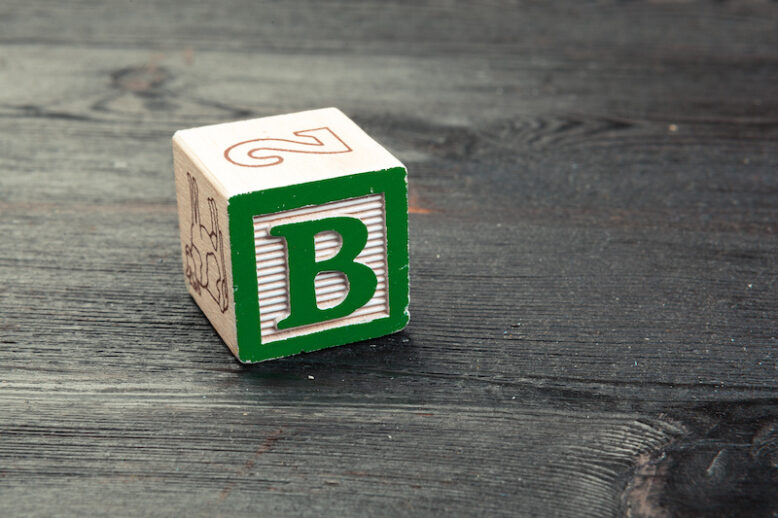
Answer: BELLO
The correct answer is bello. If you tend to confuse these four B words in Italian, take solace in the fact you aren’t alone!
Question 24: If you are going to “have a shower,” which verb should you use?
fare la doccia
prendere la doccia
avere la doccia
usare la doccia

Answer: FARE LA DOCCIA
In Italian, you “do / make the shower” – fare la doccia – rather than “have” or “take” a shower!
Question 25: Translate “I miss you” into Italian
io manco a te
io manco te
io ti manco
tu mi manchi

Answer: TU MI MANCHI
The correct answer is tu mi manchi. Like the verb piacere we saw above, the verb mancare (to miss) requires you to switch the position of the subject (in this case I / io) and the object (you / tu). A very literal translation could be something along the lines of “you are missing from me.”
Question 26: Complete the sentence – “____ ancora!” (There is some more!)
ce ne
Ce n’è
c’è ne
c’è né
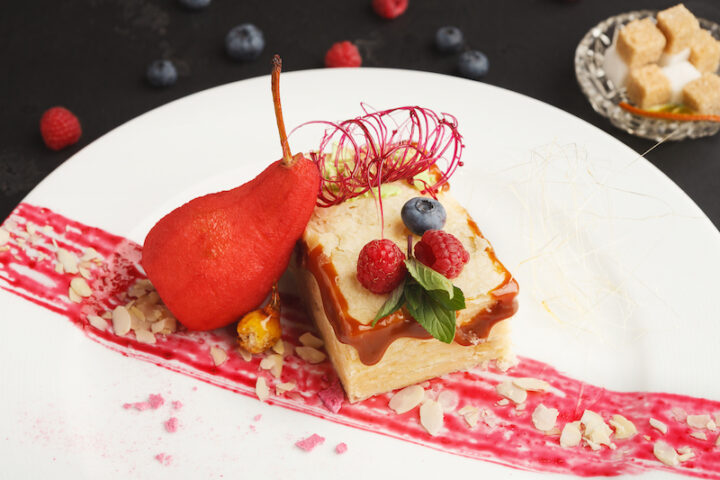
Answer: CE N’È
The correct answer is ce n’è, which means there is some. This expression features the contracted form of ce ne è, composed of ce (derived from the particle ci) and the pronominal particle ne followed by the verb essere (to be) in its third person singular form. Ce ne is used when essere is in the third person plural form sono – ce ne sono (there are some). I know, I know, this wasn’t a basic question – I promise the rest will be easier!
Question 27: What does “nipote” mean in Italian?
niece
nephew
grandchild
all of the above

Answer: ALL OF THE ABOVE
Nipote is a very confusing word for learners. It can mean five different things – granddaughter, grandson, grandchild, nephew and niece! You can tell whether the person in question is masculine or feminine by looking at the article – il nipote or la nipote – but there is no way to tell the difference between grandson and nephew / granddaughter and niece without additional context.
Question 28: What do Italians say when they answer the phone?
Prego
pronto
piacere
presto

Answer: PRONTO
Because prego can mean so many different things, some learners assume it is also used to answer the phone. Wrong! The correct term is another short P word – pronto!
Question 29: So what does “prego” mean in Italian?
please
excuse me?
you’re welcome
all of the above

Answer: ALL OF THE ABOVE
As we saw earlier on, prego has many different meanings including please, excuse me and you’re welcome. You can discover all six meanings here!
Question 30: How do you say goodbye to someone informally?
addio
Arrivaderci
ciao ciao
arrivederci

Answer: CIAO CIAO
I thought we could wrap up this quiz with a straightforward question. The informal way to say goodbye in Italian is ciao ciao, which is similar to the English bye bye. You can also say ciao one time. Ciao means both hello and goodbye, but the double ciao ciao only works to say goodbye. Arrivederci is more formal while, addio is poetic and final. Arrivaderci is simply a common misspelling of arrivederci.
Did you enjoy this Italian quiz? Please take a moment to share it with your friends! 🇮🇹
Heather Broster is a graduate with honours in linguistics from the University of Western Ontario. She is an aspiring polyglot, proficient in English and Italian, as well as Japanese, Welsh, and French to varying degrees of fluency. Originally from Toronto, Heather has resided in various countries, notably Italy for a period of six years. Her primary focus lies in the fields of language acquisition, education, and bilingual instruction.


